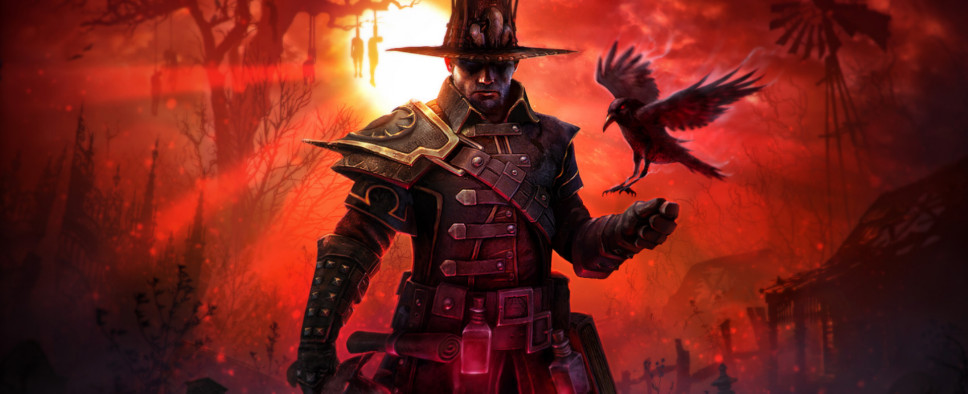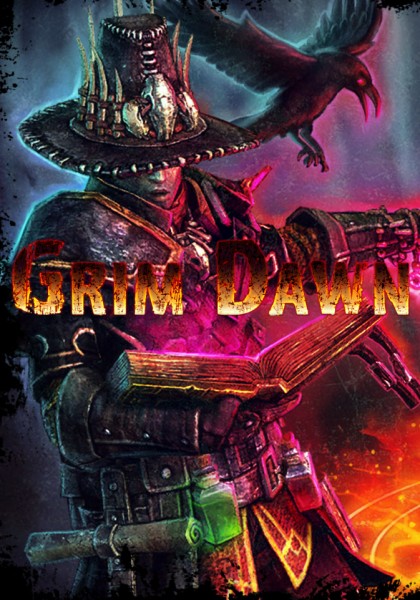Grim Dawn Review
-
Category: ReviewsHits: 17743

Article Index
Interface
Grim Dawn is an action role-playing game, and it has a simple interface to match. You left click where you want to move, you left click on the creatures you want to attack (or interact with), and that's enough to get you through about 90% of the game. Of course, there are controls outside of the left mouse button -- you can assign a skill to the right mouse button or to the 1-0 keys and use them to attack, or you can press the shift key to attack without moving, or you can press the alt key to highlight items on the ground, or you can press the E/R keys to quaff energy/health potions. There are also keys and mouse movements that allow you to zoom in or rotate the camera, but Grim Dawn was designed to be played from the default view, and so there isn't much reason to make adjustments.
All of the above is reasonably standard. What makes the Grim Dawn interface a cut above the rest is that you can just keep the left mouse button pressed, and then you automatically move towards the cursor and attack (or interact with) any creatures that get in your way. When I first started playing, I could definitely feel in my mouse hand that I had been pressing the left mouse button for the better part of an hour or two, but eventually I got used to it, and I liked how easy it made the game to play, as it mostly removes the need to quickly target moving enemies or click on the right target in a crowd. So the interface is good, and it's easy to learn. You should be able to jump right into Grim Dawn the moment you have it installed.
Gameplay
Your main goal in Grim Dawn is to kill stuff -- lots of stuff -- and not just Aetherials and Ch'thonians. There are also bandits, frogs, hounds, insects, skeletons, spiders, vultures -- and other creatures more difficult to describe. Some enemies call in reinforcements or freeze you in place or buff their allies, so you have to pay attention to what you're fighting and go after the most important foes first. Unfortunately, if Grim Dawn has a weakness, it's that it doesn't have enough types of enemies. As you play through the campaign, you see the same enemies over and over, just at higher levels as you go along.
Most fights in the game pit you against a dozen or so enemies at once, which means you have to balance out your ability to kill one thing at a time (which is good for bosses) with your ability to spread your damage around and kill lots of things in parallel (which is good otherwise). You also have to figure out how to keep yourself healed. There is only one type of healing potion in the game, and it has a cooldown, so you can't just solve all of your problems by cramming a lot of potions into your inventory. You have to build up your defenses to resist damage, or agilely move around and avoid damage, or add health steal to your attacks so damage doesn't make as much of a difference -- or all three, especially in the tougher battles at higher difficulties.
To keep combat interesting, along with regular enemies, Grim Dawn also throws heroic enemies at you. You encounter these enemies (marked with a star) fairly frequently, and sometimes they spawn with two or more at a location. So even if you're cruising along with little trouble, you still have to stay on your toes. And luckily, if you die, the penalty isn't great. You just lose some experience points, and if you make it back to your corpse, then you get most of those experience points back. That means the real penalty often enough is the time it takes you to get back to where you were, but even here Grim Dawn is friendly. There are permanent rift gates for you to use roughly every other map, and you can create your own rift gate at any time -- and it stays up even after you've used it once, so if you see a boss fight on the horizon, then you can just plop down a gate nearby and use it to get back quickly if you die.
Your secondary goal in Grim Dawn is to collect equipment. Characters can wear 14 items, including boots, gloves, helmets, weapons, shields, and rings. Each item you find can belong to one of five tiers: regular (white), magic (yellow), rare (green), epic or set (blue), or legendary (purple). Legendary items only drop once you've reached level 50 or so, but you can find all of the others right from the start -- assuming you're lucky enough. Nicely, Crate decided to make rare equipment reasonably plentiful and to not have an auction house, which means you have to hunt for your own gear -- often enough successfully -- rather than repeatedly gathering up enough money so you can buy something from someone else. That's always my preference in RPGs.
Interestingly, the items in Grim Dawn have more bonuses than you see in other games. Magic items can have five bonuses, rare items can have six bonuses, and epic items can have eight bonuses. The reason for this, I think, is that Grim Dawn includes a large number of different bonuses, and a lot of them won't help particular characters. For example, if you see a bonus that increases fire damage by 10%, and if you don't deal fire damage, then the bonus is a waste for you. So the trick is to find items that don't have any wasted bonuses, which is surprisingly tough (or at least it was for my character, who mostly only dealt physical damage).
Having more bonuses on items sounds like a good thing, but what I found mostly is that the extra bonuses make it much tougher to compare two items and figure out which one is better, especially when even straightforward comparisons are difficult. For example, you can receive bonuses for attack speed, cunning, offensive ability (a derived stat based on cunning), damage, damage conversion, and percentage damage. All of these bonuses affect your DPS, but the only way to find out by how much is to wear the item and check your stats -- which you can't do if you're browsing a shopkeeper's window (for armor anyway; weapons show you the DPS change). Still, if a game has to err on one side or the other, I'd rather its equipment is too complicated rather than too simple.
To help you tune your equipment to your liking, you can collect components. Components come in pieces, which you have to combine together, and they frequently drop from enemies. Each item you wear can have a full component or a piece attached to it. There aren't any item slots or anything like that. Components give nice bonuses (to health, damage, resistances and more). It's just that because there are so many of them -- I counted over 50 during my trip through the campaign -- they're sort of a pain to keep track of, and they're an inventory hog.
To go along with components, you can also add an augment to each of your items. Augments are much easier to deal with than components. That's because you can only purchase them from faction shopkeepers once you've gained enough reputation with the faction (which you can do by completing quests, fulfilling bounties, or killing the right enemies). It takes a while to build up your reputation, but once you've done so, augments are about as powerful as components.


